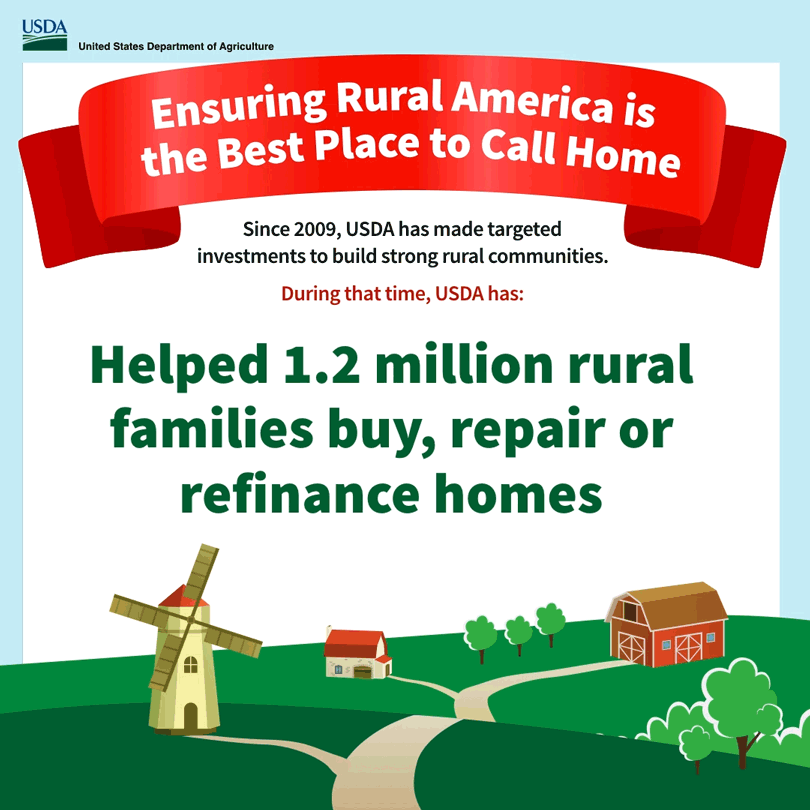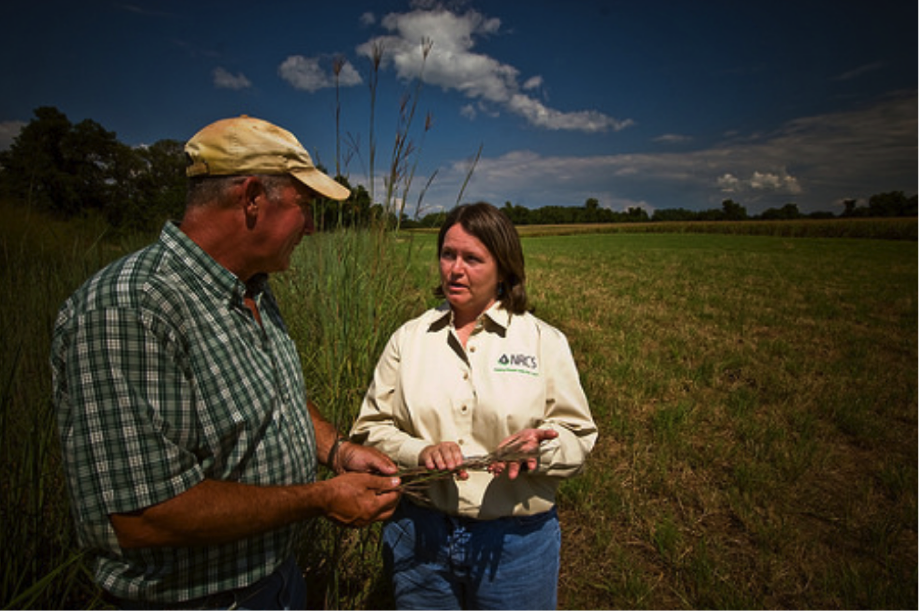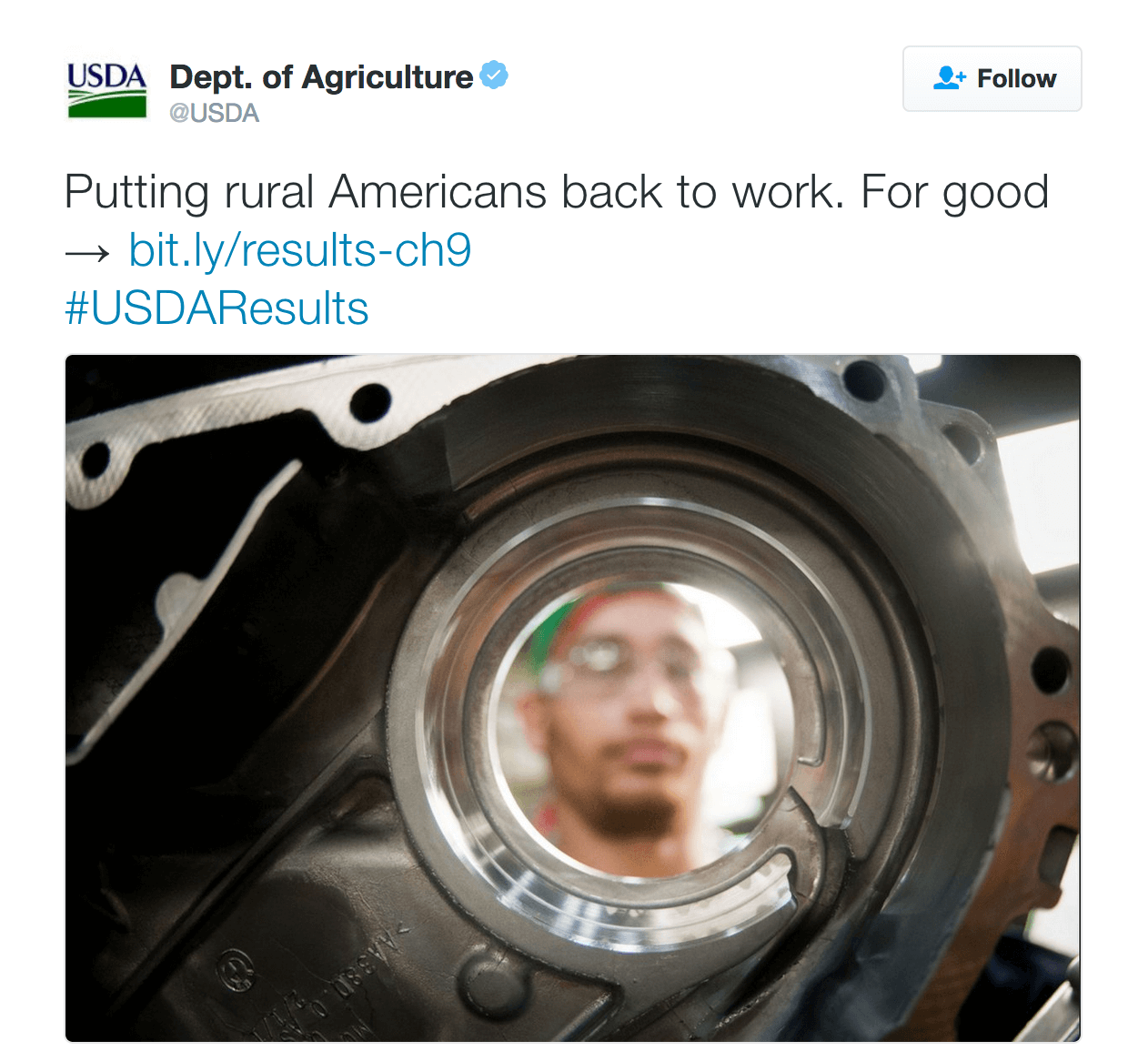|




For the last eight years, USDA has vigorously invested in the rural way of life. Last week we got the good news that today, 7.9 million fewer people are struggling to provide enough food for themselves or household members than when President Obama took office. In fact, food insecurity for children is at the lowest level on record—meaning our kids are able to access nutritious food in higher numbers than in the past. This is a significant benchmark in our battle against hunger and food insecurity, and shows the growing strength of the rural economy.
Innovation has played a significant role in bringing jobs and wages back to rural areas. Encouraging businesses to expand on new ideas benefits not only the operations themselves, but also our communities as a whole. To that end, last week we announced that 76 small rural businesses will receive grants through the Small Business Innovation Research Program to conduct research related to food security, natural resource and agricultural issues. You can find examples of the kinds of projects USDA funded across the country on our website.
We also announced a new investment in the rural quality of life by way of grants to 107 organizations to preserve and repair affordable housing for very-low- and low-income families living in rural areas. A full list of the selected organizations can be found here.
And importantly, our rural strategy includes ensuring that the rural economy includes opportunities for the next generation of rural Americans. We’ve invested in a new economy focused on lifting the potential of rural America through things like biobased products and manufacturing; production agriculture; local and regional food systems; and conservation and natural resources. Just last week we announced an investment of $26.6 million into 45 projects that will spur innovative conservation initiatives on both rural and urban farms across the country. Public and private grantees will provide matching investments, bringing the total value of support to $59 million. Demand for this type of support outpaces what USDA can provide alone, but outside partners are willing to make additional investments because they see the good it can do for the environment and for their communities.
Join us throughout the month of September as we tell the important story of eight years of significant and transformative investments across the nation that have empowered rural America to continue leading the way, strengthening America’s economy, as well as the small towns and rural communities that so many call home. Follow along on usda.gov, on the USDA blog and by using #USDAResults, or catch up on Chapter IX on our Medium site.



Throughout the month you can join us as we tell the important story of how eight years of significant and transformative investments across the nation have empowered rural America to continue leading the way, strengthening America’s economy, as well as the small towns and rural communities that so many call home.

To improve the health of the Chesapeake Bay watershed, farmers and forest landowners are using conservation systems that reduce nutrient and sediment runoff.

Producers who understand how the standards for grain, corn, wheat, sorghum and soybeans are graded can see their bottom line improve. GIPSA and FSA are helping spread the word, so ask the next time you visit your local USDA office.

Suraj Budathoki grew up farming next to a Bhutanese refugee camp. MFA’s Farmer Training Program helped him to pursue his passion for sustainable farming in MN.

Secretary Vilsack wrote an op-ed on rural America: Back in Business.

Agricultural Lands Key to a Healthy Chesapeake Bay
A vibrant and healthy agriculture sector is a critical component of restoring and improving the health of the Chesapeake Bay, and I’m proud of the steps that our Bay-area agricultural producers are taking to protect this national treasure. Agricultural producers have implemented nearly $1 billion worth of conservation practices on 3.6 million acres – an area three times the size of Delaware – since 2009 with the help of the U.S. Department of Agriculture (USDA).
Growing Farmers
Fresh. Local. Honest. This motto underscores the guiding philosophy of the Minnesota Food Association (MFA). To achieve its goals of promoting healthy food and regenerative agriculture, the MFA offers workshops for farmers and helps immigrants learn how to farm sustainably in local conditions.
Alum Proves Every Day that Diversity Programs Grow Agriculture’s Next-Gen Leaders
There is no one-size-fits-all approach to career development and, according to one of the nation’s new leaders in agriculture, the course one steers toward a profession in agriculture can be as varied and diverse as the population itself.
Massachusetts’ Smarter Lunchrooms Movement
It’s that time again! As students head back to school many school nutrition programs across Massachusetts are continuing to use Smarter Lunchrooms strategies gained through their participation in a USDA Team Nutrition grant. The research-based Smarter Lunchrooms Movement, established at the Cornell Center for Behavioral Economics in Child Nutrition Program, focuses on creating sustainable lunchrooms that make the healthy choice, the easy choice for students. The Movement is based on the idea that even small, low-cost changes can make a big difference, and Massachusetts schools are benefitting from this first-hand.
Are You and Your Pets Ready in an Emergency?
We are reminded often throughout the year of the devastating impacts that families and their communities experience when natural disasters such as, floods, mudslides, tornadoes, wildfires, earthquakes and hurricanes strike. Because September is National Preparedness Month, it is a good time to think about emergency planning. Don’t Wait. Communicate. Make an Emergency Communication Plan.
This Isn’t Farming Like Grandpa Used to Do
Samantha Whitter represents the fifth generation at Whittier Farms in Sutton, Massachusetts. Her family’s 500-acre, 100-head dairy farm is one of the largest in this small town 10 miles south of Worcester—the second largest city in New England, after Boston.
Knowledge at Your Fingertips Makes Every Penny Count
America is a nation blessed by agricultural bounty. Unfortunately, that blessing comes with price-suppressing surpluses being the norm for most of the past century with occasional periods of short stocks, and temporary prosperity for the nation’s grain farmers. Margins are tight and every penny counts.
 Experts Urge More Resources for Substance Abuse Recovery Experts Urge More Resources for Substance Abuse Recovery
All across the country this month advocates are holding special events to point out the need for more resources for substance abuse prevention, treatment and recovery. (Gary Crawford. Michael Botticelli and Sec'y Tom Vilsack)
Actuality: The Costs of the Opioid Abuse Epidemic
Agriculture Secretary Tom Vilsack at a Recovery Month event in Washington, D.C. talking about the economic and human costs of the opioid abuse epidemic.
A Spike in U.S. Agricultural Exports
U.S. agricultural exports are on an upswing. (Gary Crawford, Sec'y Tom Vilsack and Bryce Cooke)
Vilsack Says Agriculture Well Situated to Weather Low Commodity Price Storm
Low commodity prices do create problems and stress for farmers, but Secretary Vilsack says U.S. agriculture is well situated to get through this current period of low prices. (Gary Crawford and Sec'y Tom Vilsack)
Improved Household Food Security In 2015
USDA's latest measurement of household food security shows significant improvements between 2015 and the previous year. (Rod Bain and Alisha Coleman-Jensen of the Economic Research Service)
Latest USDA Trade Mission And Its Focus
Hong Kong and Shanghai are the stops scheduled for the latest Agriculture Department led trade mission. (Rod Bain and Deputy Under Secretary Alexis Taylor)

Number Of Hungry U.S. Kids Drops To Lowest Level Since Before Great Recession (NPR)
It's rare to get good news when it comes to hunger. But the government says there was a big drop last year in the number of people in the country struggling to get enough to eat, especially children. Overall, 15.8 million U.S. households, or 12.7 percent, experienced what the government calls "food insecurity" at some point during 2015.
A Turning Point for Hunger in America (Time)
The number of American households facing food insecurity is down, according to a new U.S. Department of Agriculture report. Released on Wednesday, the report found that in 2015, 12.7% of households struggled, at some point during the year, to get enough food. That number—15.8 million households—represents a decline from the 14% who faced that problem in 2014, though hunger remains more of an issue than it was before the Great Recession.
U.S. hunger risk rate falls to lowest since before recession (Boston Globe/Bloomberg News)
About 42.2 million Americans struggled to afford or obtain adequate nutrition at some point in 2015, a 12 percent drop from 2014, the Department of Agriculture said in an annual survey released Wednesday. The decline in ‘‘food insecurity,’’ which indicates risk of hunger rather than actual suffering from it, puts the number at the lowest since 2007, before the financial crisis led to 10 percent unemployment, a jump in poverty, and record federal spending for the Supplemental Nutrition Assistance Program, commonly called food stamps.
Two Nebraska companies get SBIR grants (Lincoln Journal Star)
Bugeater Foods, a Lincoln-based startup company makes insect-based food products, was one of two Nebraska businesses to receive research grants from a federal government program designed to help develop products related to food security, natural resources and agricultural issues. Agriculture Secretary Tom Vilsack announced Wednesday that 76 businesses in 35 states will receive $7.4 million in Phase I Small Business Innovation Research grants.
USDA Awards Grants to 76 Small Businesses (AgriPulse)
Some 76 small businesses in 35 states will split $7.4 million in USDA funding for research projects related to agricultural issues, food security and natural resources. USDA said the grants are being made through the department's Small Business Innovation Research program and administered by the National Institute for Food and Agriculture. In a release, USDA said the funding is designed to “encourage domestic small businesses to engage in high-growth research and development that has the potential for commercialization and could lead to significant public benefit,”
US Businesses to receive $7.4 million in Grants for Food, Ag Research (AgWeek)
Agriculture Secretary Tom Vilsack today announced that 76 small businesses around the country, including several in the Upper Midwest, will receive $7.4 million in grants to conduct research related to food security, natural resources, and agricultural issues. The grants are made through the Small Business Innovation Research (SBIR) program, a competitive funding source that is coordinated by the Small Business Administration and administered by 11 federal agencies including the U.S. Department of Agriculture (USDA), to encourage domestic small businesses to engage in high-growth research and development that has the potential for commercialization and could lead to significant public benefit.
California to get more than $5 million from USDA for agricultural innovation (LA Times)
U.S. Department of Agriculture will steer more than $5 million to California agriculture and conservation projects as part of a $26.6-million national campaign to bring innovation to the sector. The funds are to be matched by the recipients, largely public agencies, educational institutions and private conservation and agricultural groups, bringing the total investment to about $59 million, Agriculture Secretary Tom Vilsack announced Thursday.
Chicago awarded $1M USDA urban farming grant (Chicago Tribune)
Chicago will receive a $1 million federal grant to boost and coordinate urban farming in the city, particularly on land near the long-awaited Englewood Line rail trail, city and federal officials announced Thursday. Chicago's new "Growing for Chicago" initiative is one of 45 projects to be awarded a total of $26.6 million this year through the U.S. Department of Agriculture's annual Conservation Innovation Grants.
USDA grants $1.3 million to Louisiana organizations for conservation efforts (The Advocate)
Against stiff competition, two Louisiana groups received a collective $1.3 million of the $26.6 million in grants for agriculture and conservation innovation announced Thursday by the U.S. Department of Agriculture. The announcement included $321,072 for The Nature Conservancy to develop methods to encourage private investment in conservation measures throughout the Gulf Coast to help leverage the billions expected form the Deepwater Horizon settlement.






|

